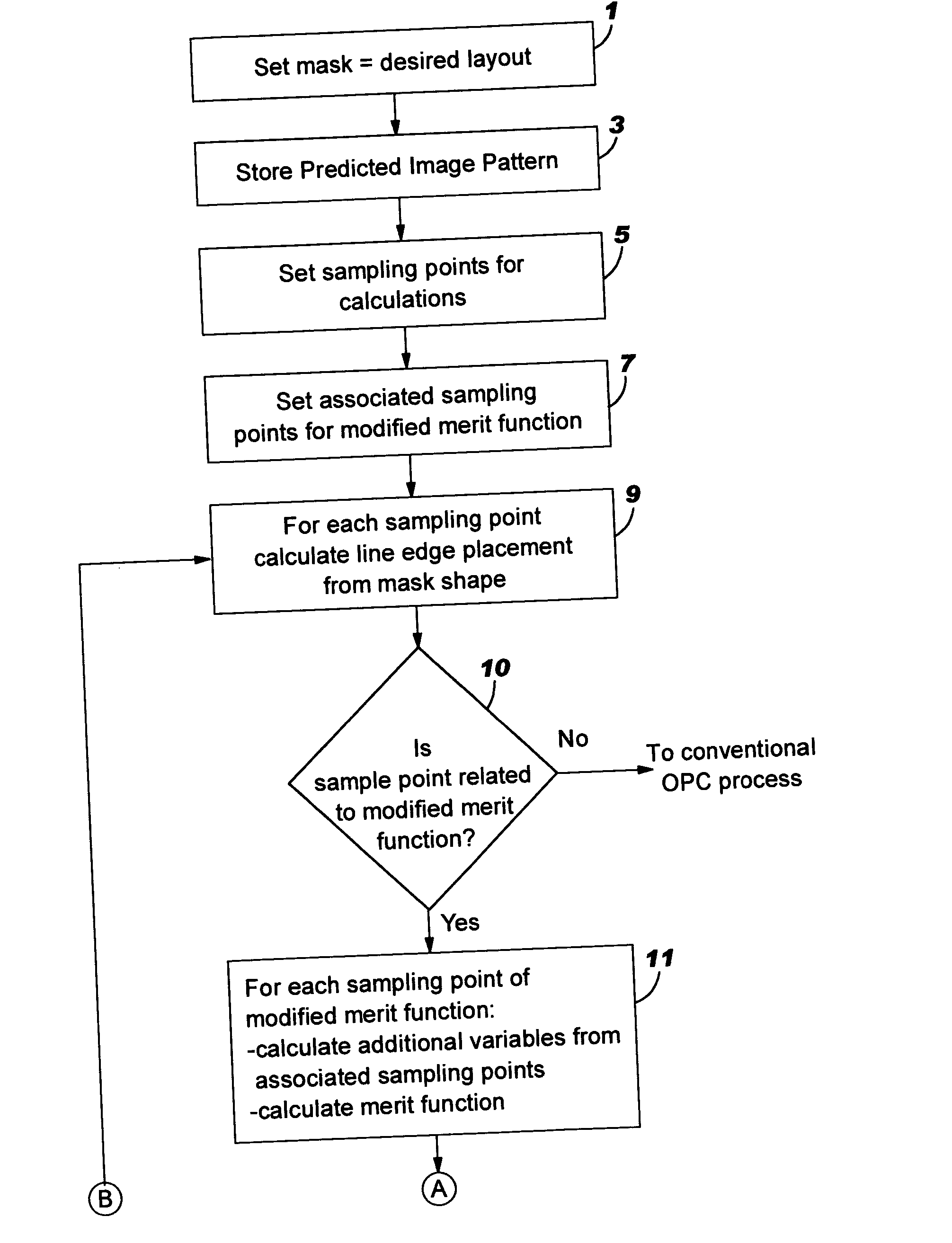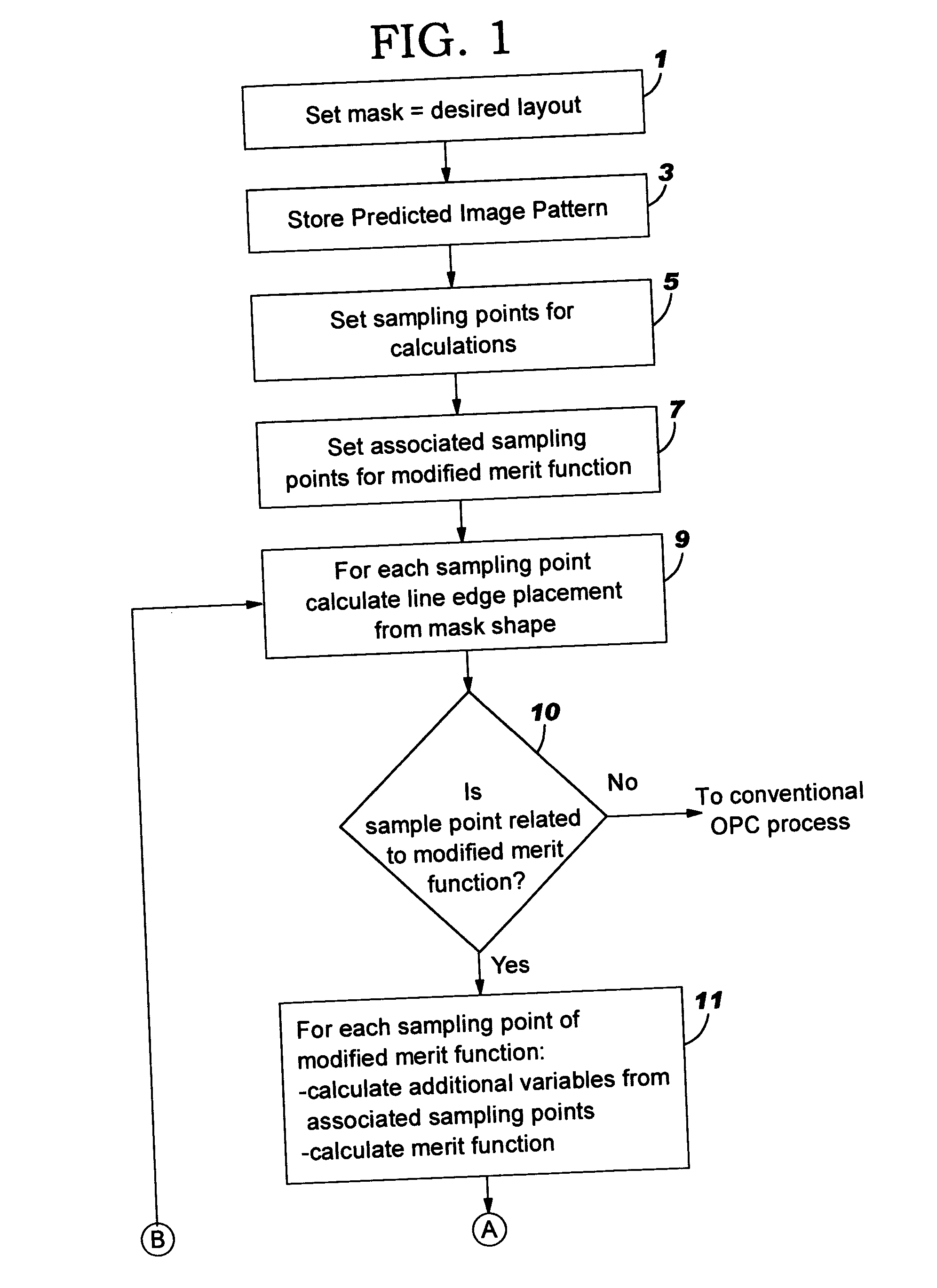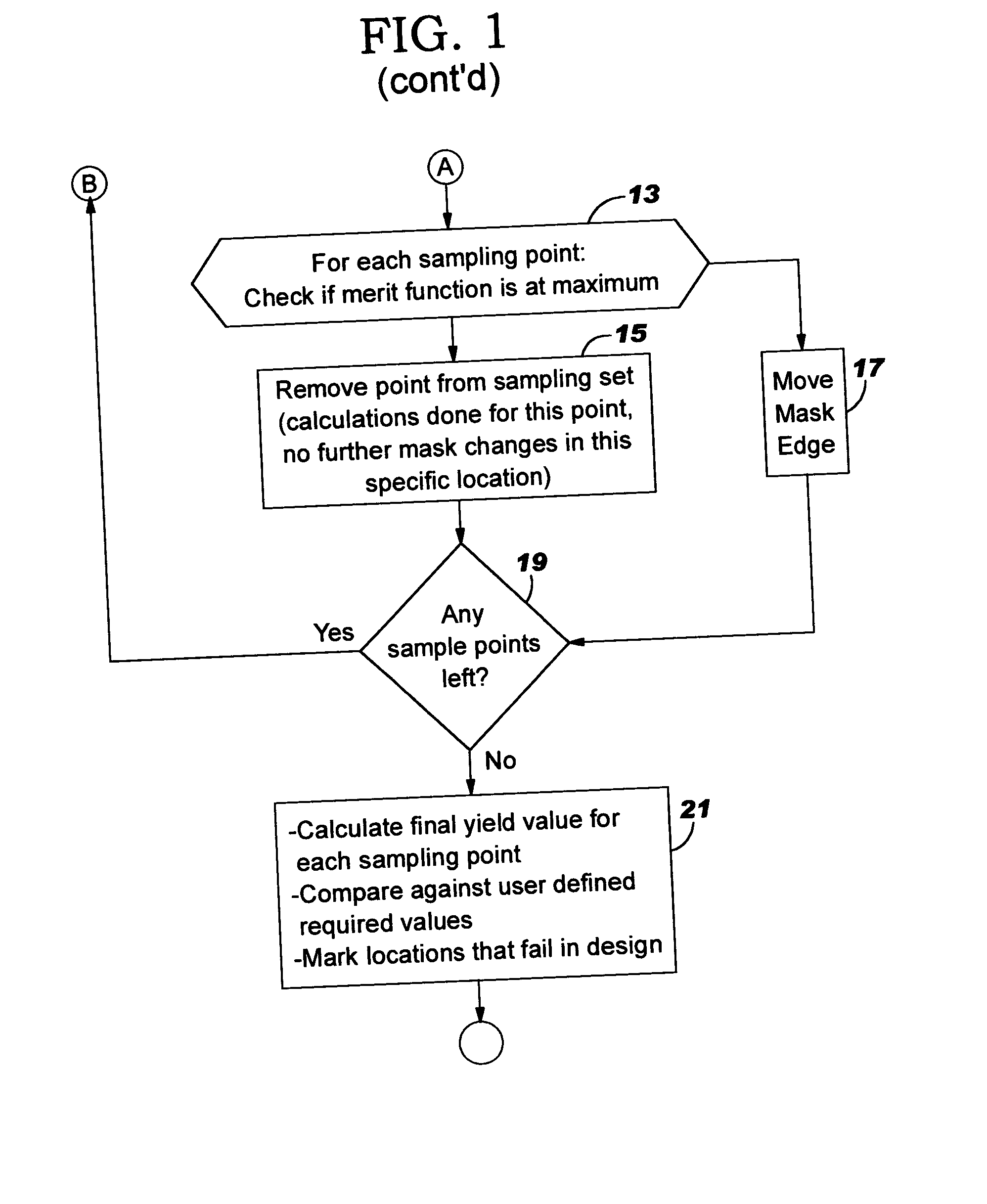Method for interlayer and yield based optical proximity correction
a yield-based, optical proximity correction technology, applied in the field of semiconductor fabrication, can solve the problems of difficult calculation of exact correction values, limited pattern fidelity of process, and general belief in limited usefulness of non-iterative rules based opc, so as to improve the optical proximity correction process, improve the lithographic processing of integrated circuits, and improve the effect of optical proximity correction
- Summary
- Abstract
- Description
- Claims
- Application Information
AI Technical Summary
Benefits of technology
Problems solved by technology
Method used
Image
Examples
Embodiment Construction
[0029] With reference to FIG. 1, there is shown a flow chart embodying one possible manner in which a conventional model-based OPC process may be modified, in accordance with the present invention, to implement a yield based process that converges on an optimum layout rather than on the original design layout.
[0030] In this regard, conventional model-based OPC tools optimize to the original design layout by the iterative process of comparing a predicted wafer image to the design layout. To achieve this, the actual circuit pattern design layout to be reproduced on a substrate layer is created on a mask. An existing OPC tool then runs a simulation on this pattern and predicts the actual wafer pattern image that would be transmitted onto the wafer substrate, taking into consideration optical proximity effects, and the like. The OPC tool then compares this predicted wafer image with the original circuit design layout, determines the required adjustment of the mask pattern so that the m...
PUM
 Login to View More
Login to View More Abstract
Description
Claims
Application Information
 Login to View More
Login to View More - R&D
- Intellectual Property
- Life Sciences
- Materials
- Tech Scout
- Unparalleled Data Quality
- Higher Quality Content
- 60% Fewer Hallucinations
Browse by: Latest US Patents, China's latest patents, Technical Efficacy Thesaurus, Application Domain, Technology Topic, Popular Technical Reports.
© 2025 PatSnap. All rights reserved.Legal|Privacy policy|Modern Slavery Act Transparency Statement|Sitemap|About US| Contact US: help@patsnap.com



